
by Rolf Kenneth Aristos
November 2007
from
RolfKennethMyhre Website
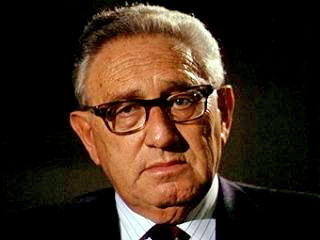
Henry Kissinger,
frontman for the Rockefellers.
Masterbuilder of the Cold War.
A wanted war criminal all over the world,
but in Norway they gave him the Nobel Peace Prize!
America's banker-industrial
elite: the Deaf Mute Blindmen
Here is Lenin on the “deaf mute blindmen”:
“The Capitalists of the world and their
governments, in pursuit of conquest of the Soviet market, will close
their eyes to the indicated higher reality and thus will turn into
deaf-mute-blind-men. They will extend credits, which will strengthen for
us the Communist Party in their countries and giving us the materials
and technology we lack; they will restore our military industry,
indispensable for our future victorious attacks on our suppliers. In
other words, they will labor for the preparation for their own suicide.”
The deaf, blind and mute
monkeys
Saul Alinsky, Chicago professional activist:
“As for businessmen, I could persuade a
capitalist on Friday to bankroll a revolution on Saturday that will
bring him a profit on Sunday even though he will be executed on Monday.”
“In brief, all presidential administrations, from that of Woodrow Wilson
to that of Ronald Reagan, have followed a bipartisan foreign policy of
building up the Soviet Union. This policy is censored. It is a policy of
suicide.”
Americans killed by US made
weapons in the Korea and the Vietnam war
“In Korea we have direct killing of
Americans with Soviet weapons. The American casualty roll in the Korean
War was 33,730 killed and 103,284 wounded… The 130,000-man North Korean
Army, which crossed the South Korean border in June 1950, was trained,
supported, and equipped by the Soviet Union, and included a brigade of
Soviet T-34 medium tanks (with U.S. Christie suspensions). The artillery
tractors were direct metric copies of Caterpillar tractors. The trucks
came from the Henry Ford-Gorki plant or the ZIL plant. The North Korean
Air Force has 180 Yak planes built in plants with U.S. Lend-Lease
equipment. These Yaks were later replaced by MiG-15s powered by Russian
copies of Rolls-Royce jet engines sold to the Soviet Union in 1947.”
“By using data of Russian origin it is possible to make an accurate
analysis of the origins of this equipment. It was found that all the
main diesel and steam-turbine propulsion systems of the ninety-six
Soviet ships on the Haiphong supply run that could be identified (i.e.,
eighty-four out of the ninety-six) originated in design or construction
outside the USSR. We can conclude, therefore, that if the State and
Commerce Departments, in the 1950s and 1960s, had consistently enforced
the legislation passed by Congress in 1949, the Soviets would not have
had the ability to supply the Vietnamese War – and 50,000 more Americans
and countless Vietnamese would be alive today.”
“Who were the government officials responsible for this transfer of
known military technology? The concept originally came from National
Security Adviser Henry Kissinger, who reportedly sold President
Nixon on
the idea that giving military technology to the Soviets would temper
their global territorial ambitions. How Henry arrived at this gigantic
non sequitur is not known. Sufficient to state that he aroused
considerable concern over his motivations. Not least that Henry had been
a paid family employee of
the Rockefellers since 1958 and has served as
International Advisory Committee Chairman of the Chase Manhattan Bank, a
Rockefeller concern.”
“Some years ago research strongly suggested that the Soviets had no
indigenous military transport technology: neither motor vehicles nor
marine diesel engines. Yet about 80 percent of the weapons and supplies
for the North Vietnamese were transported by some means from the Soviet
Union. The greater part of these Soviet weapons went to Vietnam by
Soviet freighter and then along the Ho Chi Minh trail on Soviet-built
trucks…
“Clearly, the Nixon Administration at the highest levels produced more
than a normal number of deaf mutes – those officials who knew the story
of our assistance to the Soviets but for their own reasons were willing
to push forward a policy that could only work to the long run advantage
of the United States.
It is paradoxical that an Administration that was
noisy in its public anti-communist stance, and quick to point out the
human cost of the Soviet system, was also an Administration that gave a
gigantic boost to Soviet military truck capacity.”
Richard Nixon and Henry
Kissinger
The revolutionary
semi-conductor
“In the 1970s the semi-conductor was first
mass produced in California. The economy of the 21st century will evolve
around the silicon chip, i.e., the integrated circuit memory chip and
semi-conductor components. No country large or small will make any
progress in the late 20th century without an ability to manufacture
integrated circuits and associated devices. These are the core of the
new industrial revolution, both civilian and military, and essentially
the same device is used for both military and civilian end uses. A
silicon chip is a silicon chip, except that military quality
requirements may be more strict than civilian ones.”
“Silicon Valley gets its name from the essential element silicon used in
integrated circuits. An essential component of integrated circuits is
the semi-conductor usually made of silicon and linked to other
components such as transistors into a single circuit. By 1971 an entire
computer could be produced on a single chip, in itself probably the most
significant industrial breakthrough since the discovery that steel could
be manufactured on a large scale from iron.”
A semi-conductor
“The semi-conductor revolution began in the
Silicon Valley and was a challenge to the socialist world to duplicate.
This they could not do. Every single Soviet weapon system has
semi-conductor technology which originated in California and which has
been bought, stolen or acquired from the United States.”
“In brief, in electronics the key is not copying Western technology as
for example the Caterpillar tractor was duplicated by the millions, but
to transfer specialized production equipment to mass produce critical
components.”
“Arkov makes the interesting point that the Soviets are now so far
behind technologically that they can no longer just reverse engineer as
previously – they must import even the technology to manufacture high
technology:
“They do not have the human resources or the fine tuned equipment
required to produce the high technology machinery they try to copy. Once
they know what makes a given piece of machinery work, they find that
they do not have the technical know-how and equipment to produce the
product themselves. That is why they want Western high technology
machines that will enable them to produce the products. And the Western
products they desire the most are those produced in the United States.
That is why they want American high technology machines with which they
can produce the components for high technology products.”

Silicon Valley
The phoney "race" to the Moon
“In the mid-sixties, any foolhardy person
who insisted that the United States would be first on the moon because
the Russians were technologically backward was dismissed as a dimwitted neanderthal. But at least two skilled observers with firsthand access to
the Soviet program made a detailed case, one in 1958 and one in 1969. Lloyd Mallan wrote
Russia and the Big Red Lie in 1958, after
an almost unrestricted 14.000 mile trip through Russia to visit
thirty-eight Soviet scientists. He took 6,000 photographs. It was Mallan
who first drew attention to the Soviet practice of illustrating
space-program press releases with photographs from the American trade
and scientific press…
“Unfortunately, NASA and U.S. planners have a conflict of interest. If
they publish what they know about the backwardness and dependency of the
Soviet space program, it reduces the urgency in our program. This
urgency is vital to get Congressional funds. Without transfers of
technology the U.S. is in effect racing with itself, not a very
appealing argument to place before Congress… The United States appears,
in historical perspective, to have been almost desperate in its attempts
to help the Soviets in space.”
“The Soviet economic problem in the mid-1950s was acute. The Soviet
economy had shown good rates of growth, but this was due to the impetus
given by Lend-Lease equipment and by war reparations. There were no
signs of technical viability. Numerous industries were decades out of
date with no indigenous progress on the horizon. The only solution was a
massive program of acquiring complete plants and up-to-date technology
in the West. Beginning in the late 1950s and continuing through to the
1980s, this program had to be disguised because of obvious military
implications. One facet of the disguise was the space program. The usual
stock of reasons for backwardness had run dry (the Civil War, the
Revolution, intervention, warmongering capitalists) – even the damage
done by the Nazis could only be spread so far.
So two new elements made their appearance:
-
A space program — to get the Western
world looking upwards and outwards, literally away from the Soviet
Union and its internal problems.
-
Concurrent articles and press releases
in the West on Soviet technical "achievements," spotted particularly
in Western trade journals and more naive newspapers, such as the New
York Times.
“Even the NASA Space Shuttle has been
copied. In 1984 U.S. intelligence sources reported that the Soviet Union
is building a "carbon copy" of the Space Shuttle.
Retired Lt. Colonel Thomas Krebs, former chief of the
DIA space systems branch, reported:
"We've seen the Soviet orbiter and it's identical to ours".
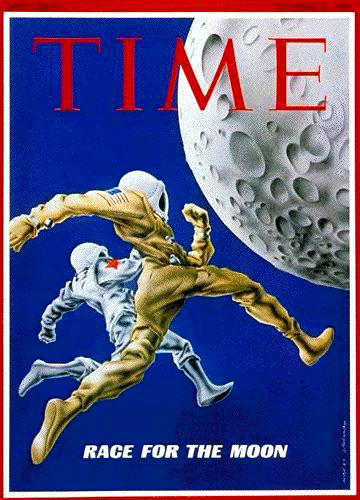
The hyped-up “space race”
The Soviet Missile Threat
Avraham Shifrin, former Soviet
Defense Ministry official:
“Before we got the (U.S.) guidance systems, we could hardly find
Washington with our missiles. Afterwards, we could find the White
House.”
“The United States and the Western world today face a truly awesome
threat from Soviet missiles. This threat would not exist if President
Richard Nixon and National Security Adviser Henry Kissinger had heeded
warnings in 1970 from its own Department of Defense and outside experts
that the Soviets were lagging in missile production technology and
required specific technologies from the West to MIRV their fourth
generation ICBMs.”
“MIRV capability is the ability to deploy a number of warheads from the
same missile, thus vastly increasing throw weight. Soviet third
generation missiles did not have this capability. As stated by a
Department of Defense report:
"... it was not until the fourth
generation that the technology became available to the Soviets
allowing greater throw weight and greatly improved accuracy so that
high yield MIRVs could be carried by operational missiles".
The phrase "became available" is a subtle
way for DOD to state what has been concealed from the public: that the
U.S. made the technology available (as we shall show below). The fourth
generation ICBMs are the SS-17, the SS-18 and the SS-19, which today
have the capability to destroy most of our 1,000 U.S. Minuteman missiles
now operational with only a portion of their warheads.”
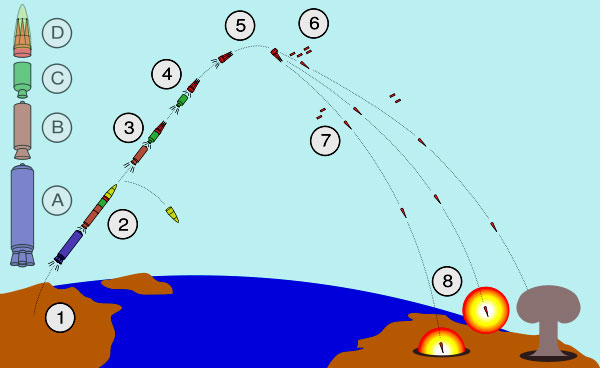
Minuteman III MIRV path
“The technological roadblock was mass
production of miniaturized precision ball bearings for guidance systems.
In the early 1960s Soviets attempted to buy U.S. technology for mass
production of miniaturized precision bearings. The technology was
denied.
However, in 1972 the necessary grinders were
sold by Bryant Chucking Grinder Company and its products are today used
in Soviet guided missile systems and gyroscopes. Specifically, the
Soviets were then able to MIRY their missiles and increase their
accuracy.”
“Ball bearings are an integral part of weapons systems, there is no
substitute. The entire ball bearing production capability of the Soviet
Union is of Western origin – utilizing equipment from the United States,
Sweden, Germany, and Italy. This transfer has been fully documented
elsewhere by this author.
All Soviet tanks and military vehicles run
on bearings manufactured on Western equipment or copies of Western
equipment. All Soviet missiles and related systems including guidance
systems have bearings manufactured on Western equipment or Soviet
duplicates of this equipment… By 1974 the Soviets had MIRVed their
missiles and were in mass production.”
The Soviets at Sea
Secretary of the Navy John Lehman, May 25,
1983, to graduating class at Annapolis (reported in U.S. Naval Institute
Proceedings, August 1983, pp. 73-4):
"Within weeks many of you will be looking across just hundreds of feet
of water at some of the most modern technology ever invented in America.
Unfortunately, it is on Soviet ships."
“Only one Soviet battleship was built before World War II, the Tretii
International ("Third International"), laid down on July 15, 1939 in the
Leningrad yards. The guns, turrets, armor, and boilers for this 35,000
ton battleship were purchased in the United States and Germany. The ship
was completed in the late 1940s. Other prewar Soviet battleships – the Marat, Kommuna, and Oktyabrskyaya Revolutsla – were reconditioned and
refitted ex-tsarist vessels. Attempts to build three battleships of the
Italian Vittorio Veneto class were abandoned.”
“All told, in 1941 the Soviet fleet comprised 3 battleships, 8 cruisers,
85 destroyers and torpedo boats, 24 minelayers, 75 minesweepers, 300
motor torpedo boats and gunboats, and 250 submarines. Most were built in
the West or to Western designs.”
“Since World War II, assistance to the Soviet naval construction program
has taken two forms: export of shipbuilding equipment and shipyard
cranes from European countries and the United States, and use of plans
and designs obtained from the United States and NATO through espionage.
For example, the sophisticated equipment of the U.S.S. Pueblo,
transferred by the North Koreans to the USSR, was at least fifteen years
ahead of anything the Soviets had in the late 1960s. In other words, the
Pueblo capture took the Soviets in one leap from postwar German and
Lend-Lease technical developments to the most modern of U.S.
technology.”
“In the 1980s, the USSR has contracted for or purchased foreign-built
oceanographic survey ships equipped with some of the most modern
Western-manufactured equipment. In place of U.S. equipment that was
embargoed, other Western equipment has been installed on the ships. This
modernization of the world's largest oceanographic fleet with Western
technology will support the development of Soviet weapon systems
programs and antisubmarine systems used against the West.”
“When we look closely at the transportation technology used to support
the most dangerous international crises of the 60s, 70s and 80s, we find
that the U.S. State Department not only had the knowledge and the
capability to stop the technological transfers which generated the
vehicles used, but was required by law to ensure that the technology was
not passed to the Soviets.
In other words, there would have been no
Cuban Missile Crisis in 1962, no supply of the Vietnamese War and no
wars of liberation in Africa and Central America if State Department had
followed Congressional instructions and carried out the job it is paid
to do.”
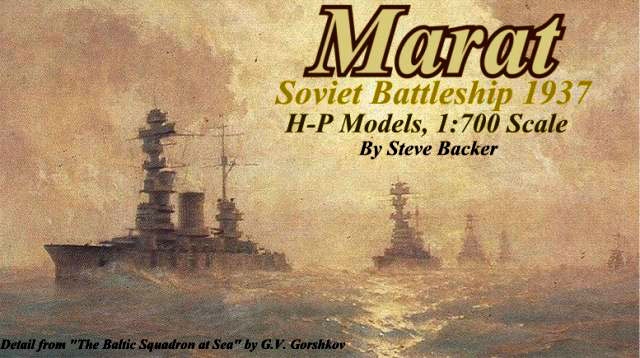
Soviet battleship
The Leaky Pipeline Embargo
“A known Soviet objective in economic
warfare is to make Western Europe dependent on the Soviet Union. Such
dependence will severely reduce European options in case of war with the
Soviet Union. The Soviets designed a massive pipeline project large
enough to change the entire Siberian infrastructure to channel these
Siberian natural gas reserves to gas deficient Europe, thus making
Europe dependent on a vital energy resource. At the same time the
Soviets convinced the Western deaf mute blindmen to finance this $22
billion deal and so finance their own destruction – just as Lenin
predicted.”
“The Siberian gas deal, known as "Russia No. 6" to the financing
bankers, is a 2,800 miles gas export pipeline from the Urengoy gas field
in Siberia to Uzhgorod on the Czech-Soviet border, where it feeds into
the West European gas pipeline network. Daily throughput is 2.8 billion
cubic feet.”
“Financing of the Siberian gas pipeline is an excellent example of the
two-faced nature of the deaf mute blindmen. In great part those who
financed this vast expansion in Soviet ability to wage global war at
Western taxpayers' expense are also prime military contractors for
Western governments.”
“While financing highly strategic projects for the Soviets, these
multinationals are selling weapons and supplies to Western governments.
An obvious deduction is that these corporations have little incentive to
reduce world tension. They maximize profit by keeping both sides in a
state of near conflict.”
“In brief, Russia No. 6 demonstrates the ongoing political power of the
deaf mute blindmen, in this case that group centered on
David
Rockefeller of Chase Manhattan. The U.S., even after six decades of
subsidy of the Soviet economy and with a defense budget approaching $300
billion annually, was pressured into a project that gave the Soviets
hard currency earnings, subsidized credit, and our finest technology –
at U.S. taxpayers' expense.”
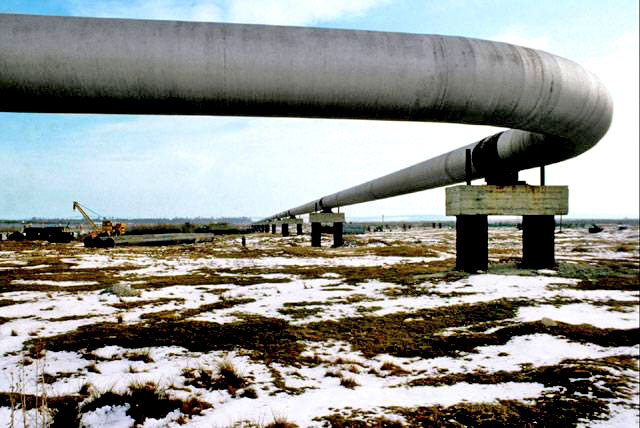
Siberian gas pipeline
Dumb mute blindmen supply
nerve gas plants
“Chemical technology is an all-important
prerequisite for modern warfare. Explosives require chemical technology
and, for example, under wartime circumstances fertilizer plants can be
quickly converted to manufacture of explosives. Many nerve gases require
chemical technologies similar to those used for production of
agricultural insecticides. This interrelationship between chemical
technology and warfare is well known in Washington, yet the Soviets have
traditionally been allowed access to the latest of Western chemical
technology under so-called cooperation agreements, through "turn-key"
plants which have been used for military end uses.”
“A Central Intelligence Agency (CIA) assessment report made in the late 1970s
concluded that the "USSR is highly dependent on Western chemical
technology."
At that time the CIA estimated that Western
equipped plants accounted for the following proportions of Soviet
chemical production:
-
40 percent of complex fertilizers
-
60 percent of polyethylene
-
75-80 percent of polyester fiber
-
85 percent of ammonia production
“The CIA report did not, however, report on
another critical fact: that Soviet plants producing these and other
chemicals use almost entirely technology copied or reverse engineered
from Western equipment. There is no indigenous Soviet chemical
technology.”
“A cluster of ten gigantic fertilizer plants for the Soviets was
arranged by the Occidental Petroleum Corporation (Armand Hammer's
company) and built by Woodall-Duckham Construction Company, Ltd., and
Newton Chambers & Company, Ltd., of the United Kingdom.
Other fertilizer
plants were built by Mitsui of Japan and Montecatini of Italy. Ammonium
nitrate, an ingredient in fertilizer manufacture, also has an alternate
use in explosives manufacture. It is used, for example, in 60/40 Amatol
in the explosive warheads of the T-7A rockets.”
“Armand Hammer of Occidental Petroleum is, of course, Moscow's favored
deaf mute capitalist, possibly vying with David Rockefeller for the
honor. However, Armand has a personal relationship with the Soviets that
could never be achieved by anyone with David's Ivy League background.
One fact never reported in U.S. newspaper biographies of Armand Hammer
is that his father, Julius Hammer, was founder and early financier of
the Communist Party USA in 1919. Elsewhere this author has reprinted
documents backing this statement, and translations of letters from Lenin
to Armand Hammer with the salutation "Dear Comrade".”
“That Armand Hammer and Occidental Petroleum would supply the Soviets
with massive plants that can quickly be converted to explosives
manufacture is no surprise. What is a surprise is that Armand Hammer has
had free access to every President from Franklin D. Roosevelt to Ronald
Reagan — and equal access to the leaders in the Kremlin.”
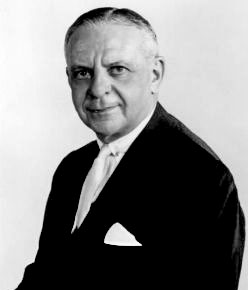
Billionaire Armand Hammer
(1898-1990)
Soviet tractor plants
“A tractor plant is well suited to tank and
self-propelled gun production. The tractor plants at Stalingrad, Kharkov,
and Chelyabinsk, erected with almost complete American assistance and
equipment, and the Kirov plant in Leningrad, reconstructed by Ford, were
used from the start to produce Soviet tanks, armored cars, and
self-propelled guns. The enthusiasm with which this tank and
armored-vehicle program was pursued, and the diversion of the best
Russian engineers and material priorities to military purposes, have
been responsible for at least part of the current Soviet problem of
lagging tractor production and periodic famines… Since 1931, up to a
half of the productive capacity of these "tractor" plants has been used
for tank and armored-car production.”
“Soviet tractor plants were established in the early I930s with major
U.S. technical and equipment assistance. The Stalingrad tractor plant
was completely built in the United States, shipped to Stalingrad, and
then installed in prefabricated steel buildings also purchased in the
United States. This unit, together with the Kharkov and Chelyabinsk
plants and the rebuilt Kirov plant in Leningrad, comprised the Soviet
tractor industry at that time, and a considerable part of the Soviet
tank industry as well. During the war, equipment from Kharkov was
evacuated and installed behind the Urals to form the Altai tractor
plant, which opened in 1943.”
“Three postwar tractor plants were in operation by 1950: the Valdimir
plant opened in 1944, the Lipetsk plant in 1947, the Minsk plant and the
Kharkov assembly plant in I950. This was the basic structure of the
Soviet tractor industry in the 1960s and 1970s… Thus, not only were all
three of the new American-built tractor plants producing tanks
throughout the 1930s, but they were by far the most important industrial
units producing this type of weapon.
Today, these plants still can, and
do, produce tanks. Yet multinational businessmen continue to blandly
assert that their dealings have no impact on our national security.”
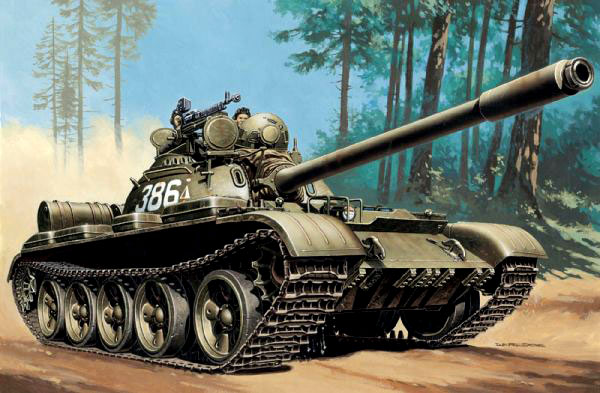
T-55 Soviet tank
Conclusions
“In the I980s Soviet weapons and supplies
keep wars going in Africa and Central America. Famine plagued Ethiopia
is stocked with Soviet weapons. In Afghanistan we have a Soviet invasion
of an independent country, Marxist Angola and Marxist Mozambique are
supplied with Soviet weapons and advisers. In Angola the Soviets are in
an unholy alliance with Chevron-Gulf. This oil multinational supplies
the foreign exchange to pay the Cuban troops. The Gulf Cabinda
installations are protected by Soviet and Cuban troops.”
“The Soviet record is clear. Since 1917 the Soviets have in philosophy
and action held that the United States is the main enemy. The Soviets
talk as if the United States is an enemy. And Soviets consistently act
as if the United States is the main enemy. We also require a $300
billion a year defense budget to protect ourselves from the Soviets.
Treason is defined in the Constitution as giving any enemy of the United
States "aid and comfort." Does the record described in the previous
chapters constitute "aid and comfort"? Obviously the record reflects
considerably more than "aid and comfort." The Soviets would have no
effective modern military establishment without the assistance rendered
by the deaf mute blindmen — on credit at that…
To conclude: if "aid and
comfort" to any enemy is treason, then the deaf mute blindmen are guilty
of treason… We now have the formidable task of bringing these gentlemen
to the bar of justice to publicly answer for their private and concealed
actions.”
The Best Enemy Money can Buy

David Rockefeller
together with Kissinger
guilty of high treason













